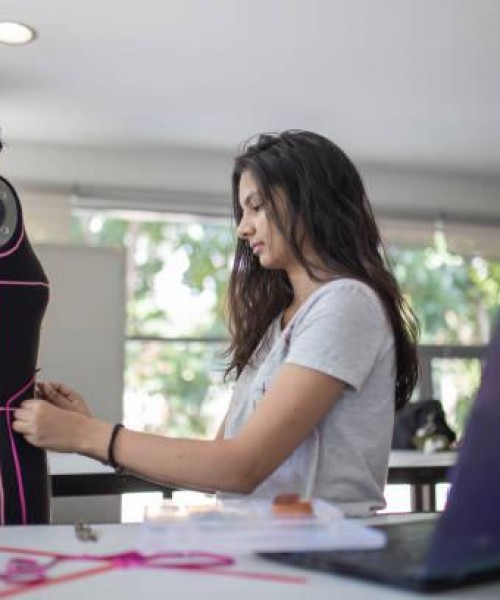当玛莎是一个年轻的女人,去看她的医生为她的糖尿病,她会停在实验室进行抽血检查她的血糖水平,并看到医生回答的问题,她是如何感觉。根据实验室的结果和对他的问题的反应,医生会改变她的药物或离开事情的现状。她将回家,并按照他的指示,毫无疑问或怀疑。
When Martha was a young woman and went to see her physician for her diabetes, she would stop at the lab for a blood draw to check her blood sugar levels and see the physician to answer questions about how she had been feeling. The physician would either make changes to her medications or leave things status quo based upon her laboratory results and responses to his questions. She would then go home and follow his directions without question or wonder.
提前25年,玛莎的糖尿病是如何管理的今天。当玛莎终于决定电脑和技术不是不可能了解在她的年龄,实际上有东西提供,她买了一台电脑,让她的女儿给她一个简单的教程如何浏览互联网,并开始对糖尿病在线研究。现在玛莎在家里的一个家庭监视器上监视她的血糖,把她的结果直接发送到她的医生的办公室。如果需要作出任何调整,医生的办公室电子邮件她通过卫生系统的新的病人门户网站。她经常在网上阅读关于糖尿病的时间,她已经加入了一个糖尿病患者的在线支持小组,当她有问题时,她通过病人的门户电子邮件她的医生最近实施的健康网络。多年来,依靠她的医生是她的健康专家,玛莎意识到这是由她知道什么是发生在她的身体,她现在参加她的健康决策的一部分。
Jump ahead 25 years to how Martha's diabetes is managed today. When Martha finally decided computers and technology were not impossible to learn about at her age and actually had something to offer, she bought a computer, had her daughter give her a simple tutorial on how to navigate the Internet, and started researching about diabetes online. Now Martha monitors her blood sugars at home on a home monitor that sends her results directly to her physician's office. If any adjustments to her medications need to be made, the physician's office emails her via the health system's new patient portal. She often spends time reading online about diabetes, she has joined an online support group for diabetics, and when she has questions she emails her physician via the patient portal her health network recently implemented. After years of relying on her doctor to be the expert on of her health, Martha realizes it is up to her to know what is happening in her body and she now takes part in making decision about her health.
上述情况正变得越来越普遍,因为医疗保健消费者继续探索世界的健康和健康知识可在鼠标点击。随着信息技术在以消费者为主导的医疗保健的作用,消费者健康信息学(卡)已经成为一个关键的球员。(2000)定义eysenbach卡为“医学信息学分析消费者需求信息的分支;使信息容易接近消费者和实现方法的研究;与模型并结合消费者的喜好为医疗信息系统”,“健康”是用来形容互联网技术和医疗合并(eysenbach,2001)。随着电子健康持续增长和卡人员继续向消费者提供高质量的资源和信息,医生和患者之间的关系是不断变化的。
The above scenario is becoming common as healthcare consumers continue to explore the world of health and wellness knowledge available at the click of a mouse. With information technology taking a starring role in consumer-driven healthcare, consumer health informatics (CHI) has emerged as a key player. Eysenbach (2000) defines CHI as "the branch of medical informatics that analyzes consumers' needs for information; studies and implements methods for making information accessible to consumers; and models and integrates consumers' preferences into medical information systems." The term "e-Health" was created to describe the merger of internet technology and healthcare (Eysenbach, 2001). As e-Health continues to grow and CHI professionals continue to provide consumers high quality resources and information, the relationship between the physician and patient is evolving.
Traditionally, the physician-patient relationship has been one of a paternalistic nature. The physician was the aggressor dominating over the patient's passive role in the healthcare system (Gallagher, 1998). During physician appointments, the patient was given information from the physician, provided instructions on what to do, and went home and followed those instructions without question. This top down approach to healthcare delivery was what most people grew up experiencing. Patients put their faith and trust in their physicians never doubting or questioning their motives or knowledge. Patients did what the physician told them and followed up at the next appointment. Little interaction, if any, occurred in between appointments.
With the introduction of tools CHI provides, patients are evolving into true consumers of health and healthcare services. Taking a more active role in their personal health, consumers are seeking out information and knowledge about their health, wellness, and providers. Armed with knowledge, consumers are empowered to take a more participative role in their healthcare. Instead of standing by and waiting for direction from their physicians, consumers are doing research, asking questions, and taking part in decision-making regarding their health. The transition to a partnership between the physician and patient has resulted in major changes to the physician-patient relationship. Not only does face-to-face interaction between the physician and patient change, exchanges will occur outside of the office visit that "will increasingly be mediated by electronic devices" (Weiner, 2012). The impact of CHI will result in many concerns regarding changes to the physician-patient relationship.
CHI is having an effect on the physician-patient relationship is by strengthening patient participation. CHI professional are helping organizations develop reliable, comprehensive health information resources to educate patients about their health. Armed with accurate information will empower patients to become more active in their healthcare management. Physicians are directing patients to reliable resources to research information discussed during office visits. Directing patients to the appropriate resources for online health information can enhance the partnership between physician and patient and increase mutual trust between parties (Fortinsky, Fournier, & Benchimol, 2012). Knowing that the information the patient is accessing is accurate will put physician concerns at ease regarding the credibility of the information the patient is reading. In addition, patients can be assured that the websites they are accessing health information from are valid and recommended by their physicians.
Another way CHI influences the physician-patient relationship by supplementing "existing relationships and forms of care" (Dedding, van Doorn, Winkler, & Reis, 2011). For example, patient portals are being developed by healthcare organizations to allow patients access to their personal health records. Interactivity with personal health information via the internet allows for health promotion through personalized messages sent to patients at home, in real-time (Lustria, Cortese, Noar, & Glueckauf, 2009). Providing access to health information using the internet also improves transparency of health information. Having transparent health information accessible allows patients to be better informed about their health which leads to better outcomes, better use of health resources, and a stronger relationship between patient and physician (Murray, Lo, Pollack, Donelan, Catania, Lee, Zapert, & Turner, 2003).
A third impact CHI is having on the physician-patient relationship worthy of mentioning is the increase in frequency and intensity of patient participation (Dedding, et al., 2010). An example of how the frequency and intensity of patient participation is increasing is through the use of telemedicine. Telemedicine involves the use of remote medical devices used to monitor, diagnose, and treat patients away from the office setting through the use of information and communication technologies (Oudshoorn, 2008). Because of the remote nature of telemedicine, it is vital that the patient act responsibly and participate in data collection by using the remote devices as instructed. In this sense, patients "adopt the role of diagnostic agent" gathering data to aid in diagnosis (Oudshoorn, 2008). The amount of "work" required by the patient in telemedicine programs becomes a primary role for the patient. No longer does the patient simply report information when in the physician's office, but the patient's role "penetrates deeply into his private home sphere and daily life" (Dedding et al., 2012). Due the new vested interest of the patient in the telemedicine process, the patient becomes a partner with the physician in data collection and decision-making.
There are concerns regarding the use of information technology taking the place of face-to-face interaction that occurs between a patient and physician during an office visit (Dedding et al., 2008). Through the use of information technology, patients have a plethora of health information at their fingertips. Instead of calling their physician for every symptom or concern, patients are turning to the internet for information and some are even self-treating using the information they find. Communications that do occur between physicians and patients will become increasingly electronic in nature (Wiener, 2012). Doctors need to use skills such as palpitation and observation to thoroughly diagnose a patient; therefore, concerns rise that the use of CHI tools will limit the ability for hands on, in person assessment leading to poor diagnosis and treatment selection.
Other concerns surround the issue of how physicians will react to patients taking a more participative role in their healthcare management. As previously stated, physicians traditionally have taken a paternalistic role in the relationship with patients. Physicians are accustomed to educating patients about their health and directing them on treatment. With patients taking a more active role in healthcare, physicians are giving up the dominating role. Some physicians struggle adjusting to this new partnership and/or encounter conflict with more aggressive patients (Murray et al., 2003). One study revealed that 95% of physicians surveyed felt the physician-patient relationship has changed because patients challenge their authority with the information found on the internet (Murray et al., 2003). Other physicians worry about the loss of control due to the information patients find on the internet. Patients come to physician appointments with stacks of internet information demanding their physician go over everything the patient found. These types of demands result in time efficiency issues due to the limit amount of time scheduled for the appointment (Murray et al., 2003). While relationship concerns arise from these types of scenarios, concerns also surround the validity of the information found.
As information technology continues to embed itself into consumer healthcare, the physician-patient relationship will experience several changes. While all of the changes are not yet completely clear, the physician-patient relationship will evolve into some form of shared partnership. The extent of that partnership will be dependent upon how active a role the patient chooses to take in the relationship. Physicians are expected to become navigators and coaches for their patients "who will potentially be faced with massive amounts of new information" (Wiener, 2012).
Moving into the future, it will be imperative for CHI professionals to take on leadership roles in order for the impact of the internet and information technology to be truly beneficial to both the physician and the patient. Educated and informed patients will take on a more active role when communicating with physicians by asking more questions and participating in decision-making (Oh & Lee, 2012). Providing resources and education for both parties will help to smooth transition from the traditional paternalistic physician-patient relationship to a joint partnership venture. Working together, physicians and patients can help improve the healthcare delivery system.










